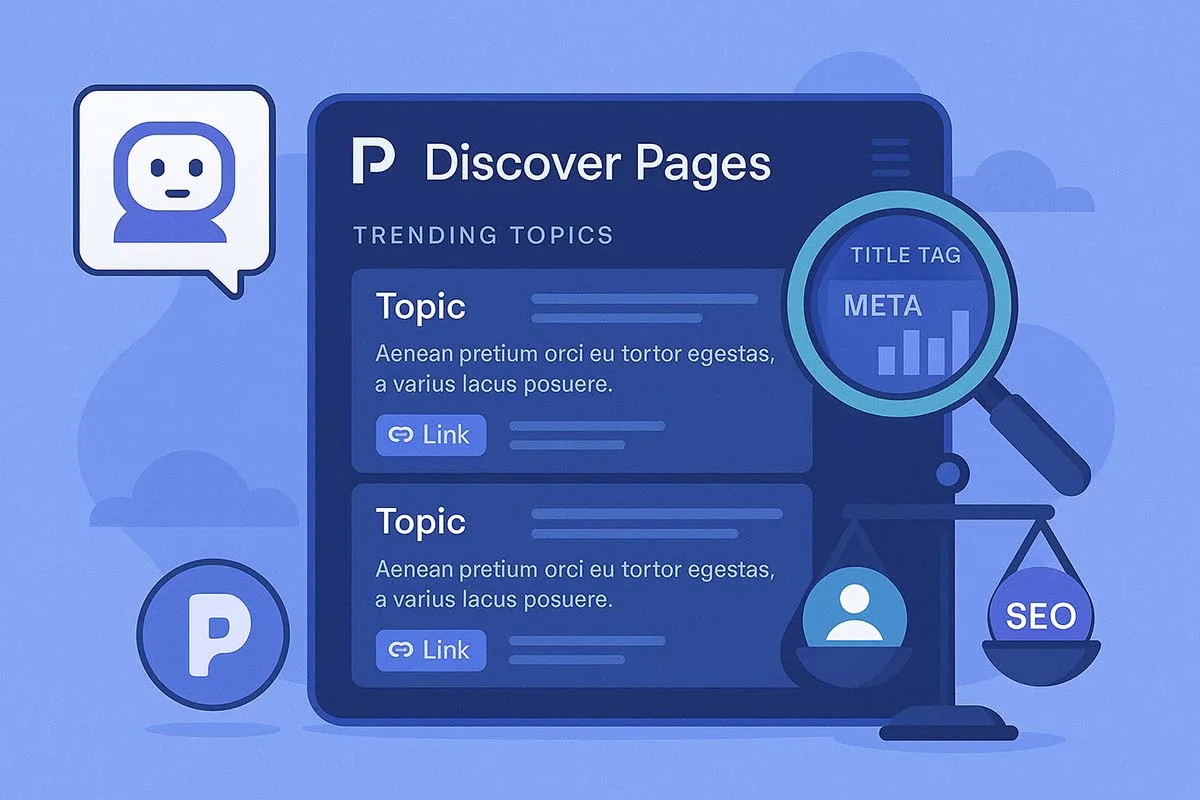Perplexity’s Discover Pages Reveal Unexpected SEO Opportunities
The Perplexity’s Discover Pages have caused a lot of talk in the SEO field. At first, these pages were supposed to be an example of programmatic SEO at scale. However, they have shown something surprising: occasionally, putting user-friendly content first can get you seen without utilizing standard SEO methods.
What are the Discover Pages on Perplexity?
Perplexity has a Discover feed that shows popular subjects with short summaries and links to complete reports. Users can then ask follow-up inquiries right in the AI-powered chatbot on the platform.
A User-Centered Approach
Discover Pages are different from regular search-optimized material since they are made for people, not computers. They are meant to keep people interested by:
- Quick overviews of popular subjects
- Links to the sources
- Easy integration with AI-powered queries
The LinkedIn Debate: Programmatic SEO or Not?
A LinkedIn post that went viral called Perplexity’s Discover Pages “programmatic SEO on steroids” because they showed up quickly in Google search results.
Helpful reactions
- Some people said it was a smart and brave way to grow.
- Others thought it was a good approach to get people’s attention and traffic.
- A few people said it was real user value.
Skeptical Responses
- Critics said that Google would “nerf” these results soon.
- People were concerned about sustainability and the risk of being labeled as having “thin content.”
Why Perplexity’s Pages Don’t Work Well for SEO
When you look more closely at the source code, you can see that Discover Pages don’t include the basics of SEO:
- Generic <title> tags (“Perplexity”)
- Every page has the same meta description
- Canonical tags that only go to the homepage
No SEO Goals
This reveals that Perplexity’s Discover Pages are not designed to rank in search engines. If they appear in Google results, it’s accidental, not strategic.
The Bigger Picture: More Than Just SEO
Focused on Humans, Not Crawlers
Perplexity is making a destination platform, not a traffic route based on SEO. The goal is to make a place where people can find out about the most popular topics every day, not to change search rankings.
The Real SEO Insight
The surprising insight is that a successful content strategy may begin outside SEO frameworks. By prioritizing user engagement and brand recognition, Perplexity naturally creates the kinds of signals that Google’s algorithms value indirectly.
What Businesses and Marketers Can Learn
Main Points
- Don’t rely only on SEO. Look at more general strategies that focus on the brand and the user.
- User experience builds signals. Engagement, sharing, and reputation can drive visibility.
- Programmatic SEO doesn’t help businesses expand over time. To really expand, you need to be useful and acquire users’ trust.
Strategic Shift
For digital marketers, Perplexity highlights the potential of AI-driven content discovery and the importance of audience-first content, even if SEO isn’t the primary focus.
Conclusion
Perplexity’s Discover Pages prove that you may gain traffic without utilizing typical SEO strategies if you make the experience enjoyable for visitors. People call it “programmatic SEO,” but the truth is that Perplexity is focusing on something bigger: a platform that puts users first.
The unexpected SEO insight? Sometimes the best way to grow traffic and brand recognition is by thinking beyond SEO altogether.
Check out Perplexity’s Discover at perplexity.ai/discover.
Do for latest news.

